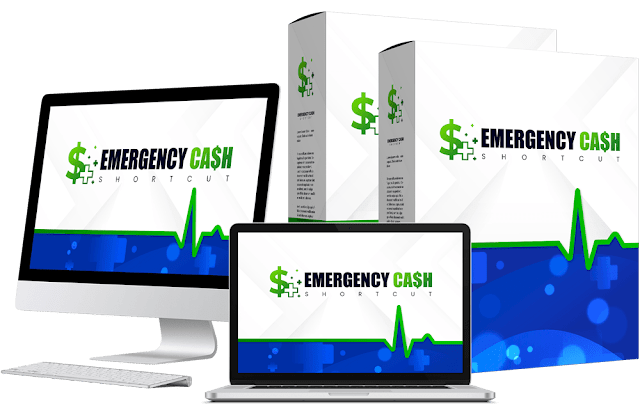In today’s fast-paced world, financial emergencies can arise unexpectedly, leaving individuals in dire need of quick cash solutions. Whether it’s an unexpected medical bill, car repair, or urgent home maintenance, having access to immediate funds can be a game-changer. Emergency cash shortcuts have emerged as one of the most sought-after solutions for obtaining fast cash in times of need. This comprehensive review aims to dissect these shortcuts, providing valuable insights into their workings, advantages and disadvantages, comparisons with other options, real-life success stories, and concluding with guiding thoughts to help you make an informed financial decision.
Understanding Emergency Cash Shortcuts: What You Need to Know
Emergency cash shortcuts encompass a range of financial solutions designed to provide quick access to funds, typically within a short timeframe—often 24 to 48 hours. These options can include payday loans, personal loans, cash advances, and peer-to-peer lending platforms. The primary appeal lies in their expedited approval processes, which cater to individuals who need urgent assistance without the lengthy application procedures commonly associated with traditional loans.
While these shortcuts promise speed and convenience, they often come with varying degrees of risk. Understanding the nuances of each option is essential for making an informed choice. Many lenders target consumers in urgent need, sometimes leading to predatory lending practices. Thus, it’s critical to educate yourself about interest rates, repayment terms, and the overall loan structure before committing.
Additionally, the reputation of the lender plays a paramount role in determining the safety of the transaction. Researching reviews and ratings can help you avoid scams and choose reputable institutions. Emergency cash shortcuts can be beneficial, but they require due diligence and careful consideration of the terms and conditions.
Awareness of the legal implications is equally vital. Different regions have various regulations governing short-term loans, including interest rate caps and maximum loan amounts. Familiarizing yourself with these laws can protect you from excessive fees and ensure you are making a safe and legal decision.
Furthermore, understanding the purpose of the emergency cash is crucial. If the funds are intended for necessary expenses, such as medical emergencies or essential repairs, the benefits may outweigh the risks. However, if you find yourself resorting to these options for non-essential spending, reconsidering your financial habits may be wise.
Lastly, the urgency of your situation can dictate the appropriateness of these shortcuts. For those who can afford to wait and explore traditional financing options, it may be more beneficial to do so. However, for individuals facing imminent deadlines, emergency cash shortcuts can provide the relief they desperately need.
In summary, while emergency cash shortcuts can be lifesavers in financial crunches, they come with their own sets of challenges and risks. The key is to understand these elements thoroughly before seeking a solution.
How Emergency Cash Shortcuts Work: A Step-by-Step Guide
The process of obtaining emergency cash shortcuts is typically straightforward, designed for efficiency to meet the pressing needs of consumers. The first step involves identifying a suitable lender or financial service provider. This can range from banks and credit unions to online lenders and peer-to-peer platforms. Each option has its own set of criteria, so it is essential to research and compare their terms.
Once a lender is chosen, the next step is to initiate the application process. Most lenders offer online applications that are user-friendly and quick to complete. Applicants will usually need to provide basic personal information, such as their name, address, employment details, and income level. Some lenders may require additional documentation, such as bank statements or pay stubs, particularly for larger amounts.
After submission, lenders typically review the application promptly. In many cases, approval can occur within minutes, especially with online platforms that utilize automated decision-making algorithms. Upon approval, the next step is often the signing of the loan agreement. This document outlines the terms and conditions, including the loan amount, interest rate, repayment schedule, and any fees associated with the loan.
Once the agreement is signed, funds are usually disbursed quickly, with some lenders transferring money directly to the applicant’s bank account within 24 hours. This immediacy is a defining feature of emergency cash shortcuts, making them appealing to those in urgent need. However, applicants should carefully review the details before accepting the funds to ensure they understand their financial obligations.
Repayment is the next crucial aspect to consider. Most emergency cash loans require repayment within a short timeframe, typically ranging from a few weeks to a few months. Some lenders may offer flexible repayment plans, while others may require full repayment on the next payday. It is essential to plan for this obligation to avoid penalties or additional fees.
In cases where repayment may be challenging, many lenders offer options such as rollovers or extensions, allowing borrowers to extend their repayment periods for a fee. However, this practice can lead to increased debt if not managed carefully, as additional interest charges accumulate.
To summarize, emergency cash shortcuts operate on a streamlined model focused on speed and convenience. However, borrowers must navigate the application process, understand their repayment obligations, and consider the long-term implications of taking on short-term debt.
Pros and Cons of Using Emergency Cash Shortcuts Explained
Like any financial product, emergency cash shortcuts come with their own set of advantages and disadvantages that potential borrowers must weigh carefully. One of the most significant benefits is the speed at which funds can be accessed. For individuals facing urgent financial needs, obtaining cash within a day can provide substantial peace of mind and help prevent further financial complications.
Another advantage is the relatively lenient qualification criteria. Many emergency cash options are available to those with less-than-perfect credit, making them an accessible option for individuals who may struggle to secure traditional loans. This inclusivity means that individuals can often find a solution even when their credit history poses challenges.
Moreover, the straightforward application process adds to the appeal. Many lenders offer online applications that can be completed in a matter of minutes, with minimal documentation required. This convenience is especially beneficial for individuals who may not have the time to visit a bank or credit union for a lengthy approval process.
However, alongside these advantages, there are notable drawbacks to consider. One of the most significant concerns is the high interest rates associated with emergency cash shortcuts. Many lenders charge exorbitant fees that can lead to a cycle of debt if borrowers are unable to repay the loan on time. Understanding the total cost of borrowing is crucial to avoid falling into a financial trap.
Additionally, the short repayment terms can create pressure on borrowers. Many emergency cash loans require repayment within a few weeks, which may not provide sufficient time for individuals to stabilize their finances. This urgency can lead to a situation where borrowers must take out additional loans to cover the original debt, further compounding their financial issues.
Another potential pitfall is the risk of predatory lending practices. Some lenders target desperate individuals with misleading terms and high fees, taking advantage of their urgent need for cash. It is essential for borrowers to research lenders thoroughly and understand the terms before proceeding with any application.
Lastly, reliance on emergency cash shortcuts can perpetuate a cycle of financial instability. Individuals who frequently resort to these options may find themselves in a loop of borrowing, ultimately leading to a lack of long-term financial planning and reliance on credit.
In conclusion, while emergency cash shortcuts provide immediate relief and accessible solutions for those in need, they are accompanied by significant risks and challenges. Weighing the pros and cons is essential for individuals to make informed decisions that align with their long-term financial health.
Comparing Emergency Cash Options: Which Is Right for You?
When faced with a financial emergency, various cash options are available, each with its unique characteristics, benefits, and drawbacks. Understanding the differences among these options can help you choose the most suitable solution for your circumstances. The primary choices include payday loans, personal loans, cash advances, and peer-to-peer lending.
Payday Loans are short-term, high-cost loans typically due on the borrower’s next payday. They are often easy to qualify for, making them a popular choice for individuals with poor credit. However, they come with extremely high-interest rates, which can lead to a cycle of debt if not managed carefully. If you only need a small amount of cash to bridge the gap until your next paycheck, this option may work, but it requires diligent planning to repay on time.
Personal Loans, on the other hand, are often available through banks and credit unions and can provide larger amounts with more favorable terms. Though they may take longer to process and require a better credit score, personal loans typically have lower interest rates than payday loans. If you need more time to repay and a larger sum, a personal loan could be the better choice.
Cash Advances are another option, allowing borrowers to take out a portion of their credit card limit as cash. This option can be attractive due to its convenience but typically comes with high fees and interest rates. It’s essential to consider whether this short-term fix will impact your overall credit utilization and future credit opportunities.
Peer-to-Peer Lending platforms are an alternative route that connects borrowers with individual lenders. These platforms often offer competitive interest rates and flexible repayment terms, making them a viable option for some. However, they may also require a good credit history and can take longer to process than other options. If you have time to shop around and compare rates, this option could yield beneficial terms.
When determining which option is right for you, consider the speed and amount of cash needed, your credit score, and your ability to repay within the required timeframe. Also, look beyond just the interest rates—consider overall fees, terms, and the lender’s reputation.
For individuals facing a genuine financial emergency, it’s essential to act quickly but also to choose wisely. Evaluating the options available and assessing your financial situation can help you select the path that best aligns with your needs and repayment capabilities.
Ultimately, the right choice will vary for each individual, depending on their unique circumstances and financial goals. Understanding the landscape of emergency cash options can empower you to make better-informed decisions during challenging times.


